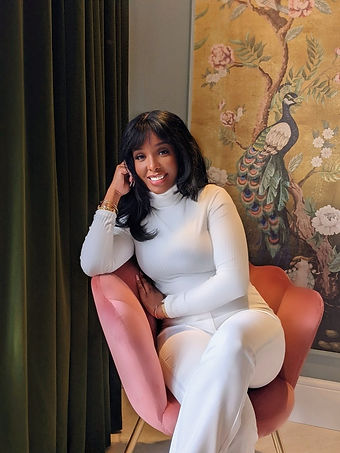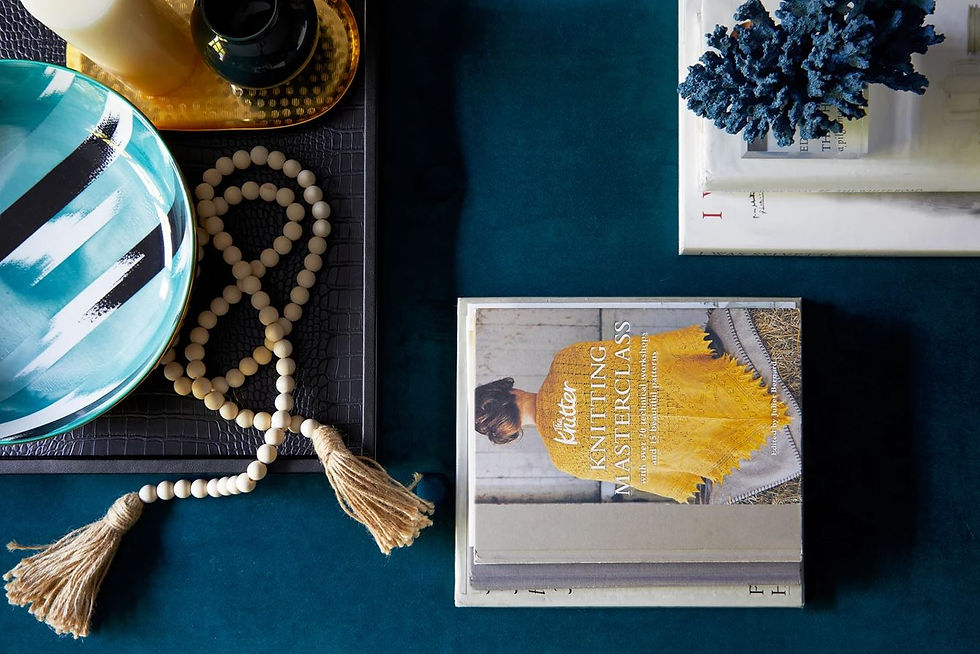


Interior Design is personal,
you have to get to know the client."
My name is Enass Mahmoud and I’m the founder of Studio Enass - a London-based interior design studio that specialises in residential and commercial spaces. We focus on creating unique spaces that cater to each client's personality.
I’ve been working within the industry for 9 years, however I’ve been running my own business for 4 years now. I have a real passion for materials, colour and the beauty behind craftsmanship. I believe that it’s the small, finer details that make the bigger picture!
From young, I've always known that I loved interiors. When I was a child, I used to love creating little rooms with the building blocks my father used to give me and creating little wallpaper for those rooms. Over the years I've grown to understand that Interior design is personal - you have to get to know the client. You’re designing a space where the client will be the majority of the time, so it’s meant to reflect who they are. With interior design, it’s all about having personal relationships with your client and really getting to know/understand what they do and want.
If you walk into a room that is beautifully designed, you instantly feel much calmer and relaxed. However, if you walk into a room with bright colours, it may trigger or cause a different emotion/mood, which is why interior design is very client specific.
Who is a Interior Designer? Learn More on our roles page.
What route did you take to becoming an Interior Designer?
During my A-levels, I completed an Art & Design foundation course, which taught me a bit about fine art, textiles and surfaces. From this, I went to university to study Surface Design, which specialised more in the surfaces of products for interiors; shapes, patterns, textures and prints. This degree really helped me up to now as an Interior Designer, in terms of details to craftsmanship, textures and prints for items I place within my design projects.
I also did a ton of internships, ranging from showrooms for homeware items and soft furnishing to textiles for fashion to see how I liked it. These internships helped me to discover what I did and did not like. Weirdly enough, I never really wanted to work for myself ever, but I guess I just stumbled into it along my journey.










As an Interior Designer, what does a typical day at work look like for you?
I know this sounds typical but literally no days are the same! I'm usually up at 6am to leave the house for 7am, usually grabbing a coffee on the way. I’ll head over to the client's site to meet with the builders and see how the project is coming along. Here, we’ll evaluate whether anything is missing or whether any changes need to be done whilst it can be. I’m usually on site from 9am and will sometimes leave at 3pm/4pm, depending on how much work is going on.
The projects are literally my baby, so I have to oversee the builders and subcontractors on site to ensure everything is installed according to the design. I work with a whole range of subcontractors (tilers, carpenters, floorers etc.) and other skilled people within the Industry such as Upholsters, Builders, Architects, Artists and Photographers once the project is done.
What are some challenges you personally face at work?
There are a few! I’m very lucky to now have a good builder - in the past, I didn’t have great builders/handymen, which made it very difficult to progress on projects. A bad builder can literally ruin your project, especially when you aim to execute your design to a high standard to meet your client’s requirements.
Another difficulty would be managing suppliers - it can be a little overwhelming to chase multiple suppliers for things to be done correctly or on time, as all of these things affect my delivery of the project. A lot of problem solving is required from me whenever I encounter issues to do with supplier delays or errors, which can be challenging, but a great learning curve.
What are some of the most exciting project’s you’ve been involved in so far?
My first ever project - it was also the most stressful project for me because it was my first. I designed a VIP suite for a client at the 02 Arena. My dining room project is also another exciting project I’ve done, because I got to push the boundaries a bit more and experiment with more colour.
What are some main skills you’ve picked up within your role?
Some key ones are problem solving, organisation, working with people (collaboration) and time management. I’ve definitely developed my design ability and style – things I used to like before I don’t like now. The more you involve yourself in design projects and research, the more your tastes evolve and you discover what you like better. I’ve really just learnt to grow and add to the skills that I already have, whilst gaining new ones.
What are some challenges you personally face at work?
There are a few! I’m very lucky to now have a good builder - in the past, I didn’t have great builders/handymen, which made it very difficult to progress on projects. A bad builder can literally ruin your project, especially when you aim to execute your design to a high standard to meet your client’s requirements.
Another difficulty would be managing suppliers - it can be a little overwhelming to chase multiple suppliers for things to be done correctly or on time, as all of these things affect my delivery of the project. A lot of problem solving is required from me whenever I encounter issues to do with supplier delays or errors, which can be challenging, but a great learning curve.
"For me, the best thing about my role is seeing your designs come to life! Walking into a room and seeing your project completed and seeing your clients happy is the most rewarding part! It makes all the stress of the project worth it."

What advice would you give a young woman thinking about a career in your role?
Take a short/long course in Interior Design that will help give you insight and sharpen your eye for design. This will also help with your portfolio and skillset. Also get as much experience as you can! Do not rush the process; take your time and learn as much as you can!"
Website: https://www.studioenass.com/
